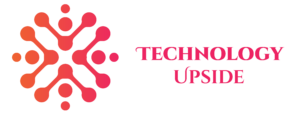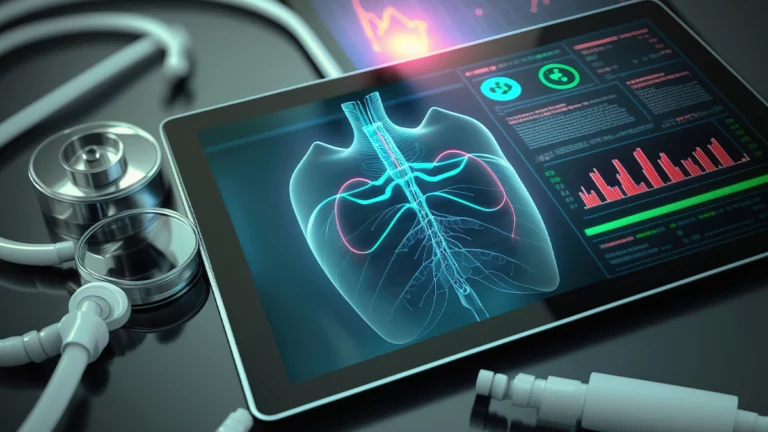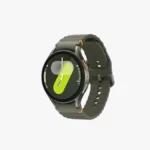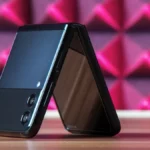Healthcare technology has been advancing at an unprecedented rate, transforming how healthcare providers deliver patient care. Integrating technology into the healthcare system has improved the quality of care, increased efficiency, and reduced costs, from electronic health records to wearable devices. In this article, we will explore the latest trends in healthcare technology, its impact on patient care, and the challenges healthcare providers face in implementing these technologies. Whether you are a healthcare professional, patient, or technology enthusiast, this article will provide valuable insights into the rapidly evolving field of healthcare technology.
Let’s Start with the List of Technologies in Healthcare:
-
Telemedicine
Telemedicine delivers healthcare services remotely using telecommunications technology in healthcare, such as video conferencing, mobile apps, and other digital communication tools. Telemedicine has become increasingly popular in recent years due to the convenience it offers patients and healthcare providers and the potential cost savings it can provide.
One of the most significant advantages of telemedicine is that it enables patients to receive medical care from the comfort of their homes or other remote locations. This can be especially beneficial for individuals who live in rural or remote areas, where access to medical facilities and specialists may be limited. Telemedicine also allows patients to avoid the inconvenience and expense of traveling to appointments and the potential exposure to infectious diseases in waiting rooms and other healthcare settings.
Telemedicine has also proven to be an effective tool for providing mental health services, including therapy and counseling. Patients who may be reluctant to seek traditional in-person treatment due to the stigma associated with mental illness or other reasons can benefit from the privacy and confidentiality offered by telemedicine.
In addition to its benefits for patients, telemedicine can be a valuable tool for healthcare providers. By enabling providers to deliver care remotely, telemedicine can help reduce their workload and improve efficiency, allowing them to see more patients in less time. This can be particularly helpful for providers who are based in busy urban areas, where demand for medical services can be high
-
Electronic Health Records (EHRs)
Electronic Health Records (EHRs) are digital records of patients’ health information that are stored in a computerized format. EHRs contain a patient’s medical history, diagnoses, medications, allergies, laboratory and test results, and other important health-related information. EHRs have become increasingly popular in recent years as more and more healthcare organizations move away from paper-based records.
There are many advantages to using EHRs. First and foremost, they can improve the quality of patient care. EHRs allow healthcare providers to access a patient’s complete medical history in one place, which can help them make more informed decisions about their care. EHRs also make it easier for healthcare providers to share information, improving the coordination of care and reducing medical errors.
Another advantage of EHRs is that they can save time and reduce costs. With paper-based records, healthcare providers often spend much time searching for patient information or filling out forms by hand. EHRs automate many of these tasks, freeing providers’ time to focus on patient care. EHRs can also reduce costs by reducing the need for paper-based records and decreasing the likelihood of errors leading to costly medical procedures or lawsuits.
-
Artificial Intelligence (AI)
Artificial intelligence (AI) is the branch of computer science that creates intelligent machines that can perform tasks without human intervention. AI aims to create machines that can think and learn like humans, allowing them to solve complex problems and make decisions based on data.
AI technology in healthcare has advanced rapidly over the past few decades, thanks in part to the development of deep learning algorithms and the availability of large datasets. These algorithms use artificial neural networks to learn from data, allowing them to recognize patterns and make predictions based on that data.
There are many applications of AI, ranging from self-driving cars and natural language processing to image recognition and medical diagnosis. AI is also used in finance, marketing, and education to automate tasks and improve decision-making.
One of the key benefits of AI is its ability to process and analyze large amounts of data quickly and accurately. This has led to significant improvements in fields such as healthcare, where AI is used to diagnose diseases and develop new treatments. AI is also used in the business world to identify patterns and trends in customer behavior, allowing companies to make more informed decisions about marketing and product development.
Despite AI’s many benefits, there are concerns about its impact on society. One of the main concerns is the potential for AI to replace human workers, leading to job losses and economic disruption. There are also concerns about using AI in decision-making, particularly when it comes to sensitive areas such as criminal justice and national security.
-
Wearable Technology
Wearable technology refers to electronic devices worn on the body as accessories or clothing, allowing individuals to track and monitor various aspects of their health and fitness. These devices have become increasingly popular in recent years, with advancements in technology making them more affordable and accessible to the general public.
Some of the most common types of wearable technology in healthcare include smartwatches, fitness trackers, and smart clothing. Smartwatches are typically worn on the wrist and can perform various functions, such as displaying notifications, tracking fitness metrics, and even making phone calls. On the other hand, fitness trackers are specifically designed to track physical activity, such as steps taken, calories burned, and heart rate. Smart clothing, such as shirts and leggings, often feature embedded sensors that can track various metrics, such as breathing rate and muscle activity.
One of the primary benefits of wearable technology is that it allows individuals to track their health and fitness goals in real time. This can be particularly helpful for people trying to lose weight, improve their fitness, or manage a chronic health condition. For example, a fitness tracker can provide valuable information about an individual’s heart rate during exercise, allowing them to adjust their intensity level accordingly.
In addition to health and fitness tracking, wearable technology is also being used in various other industries. For example, smart clothing is being developed in the fashion industry that can change colors and patterns based on an individual’s mood or environment. In the sports industry, wearable technology is used to improve performance and prevent injuries by tracking an athlete’s movement patterns and biomechanics.
-
Virtual Reality (VR)
Virtual reality (VR) is an advanced technology in healthcare that enables individuals to immerse themselves in a simulated environment created using computer-generated graphics. VR technology uses special equipment like headsets and gloves, creating a completely immersive experience that feels like the user is in a virtual environment.
The technology used in VR involves a combination of software, hardware, and sensors that work together to create a simulated experience. The headset used in VR has a display screen placed in front of the user’s eyes, which covers the user’s field of vision, and often incorporates speakers or headphones for sound. The user’s movements and actions are tracked by sensors placed on the headset, gloves, or other equipment, allowing the virtual environment to respond to the user’s movements.
The applications of VR are diverse and can be used in many fields like entertainment, education, healthcare, engineering, and more. In the entertainment industry, VR creates immersive gaming experiences and virtual theme park rides. In education, VR can be used to provide students with interactive and engaging lessons, allowing them to explore and learn in virtual environments.
In healthcare, VR is used for pain management, physical therapy, and even for training medical professionals. For example, VR can be used to create surgery simulations or train medical professionals on how to handle medical emergencies. In engineering, VR can be used for virtual prototyping, allowing engineers to design and test new products before they are built in real life.
-
3D Printing
3D printing, also known as additive manufacturing, is a technology that has revolutionized various industries, including healthcare. 3D printing enables the production of customized and complex structures using computer-aided design (CAD) software and various materials, including metals, plastics, and biological materials. In healthcare, 3D printing can potentially transform medical treatment and improve patient outcomes.
One of the most significant applications of 3D printing in healthcare is the production of patient-specific implants, prosthetics, and anatomical models. Traditional implants and prosthetics are typically made from standardized designs, which can lead to poor fit and patient discomfort. 3D printing enables the creation of patient-specific implants and prosthetics that match the patient’s exact anatomy. This can improve the function and comfort of the device and reduce the risk of complications.
Anatomical models created using 3D printing can also aid in surgical planning and training. Surgeons can use 3D-printed models to visualize complex anatomy and plan surgical procedures, reducing the risk of complications and improving patient outcomes. Medical students can also use 3D-printed models to learn about anatomy and surgical procedures, enhancing their understanding and skills.
Another promising application of 3D printing in healthcare is the production of tissue and organ substitutes. Researchers are currently exploring 3D printing to create bio-printed tissues and organs using biological materials such as cells and biomaterials. These tissues and organs could be used for transplantation, reducing the demand for donor organs and improving patient outcomes.
-
Blockchain
Blockchain technology has been making waves in various industries, and healthcare is no exception. Blockchain in healthcare refers to the use of blockchain technology to store, secure, and share electronic health records (EHRs) and other healthcare data.
One of the primary benefits of using blockchain in healthcare is its ability to enhance data security and privacy. The decentralized nature of the blockchain means that patient data can be stored on a distributed network of computers, making it virtually impossible for hackers to access it. Additionally, blockchain technology allows for the secure sharing of patient data between healthcare providers without compromising patient privacy.
Another benefit of using blockchain in healthcare is the potential to streamline data sharing and improve data interoperability. Currently, patient data is often stored in disparate systems that do not communicate, making it difficult for healthcare providers to access a patient’s complete medical history. Using blockchain technology, patient data can be stored in a single, shared ledger that authorized healthcare providers can access.
Furthermore, blockchain technology can help reduce healthcare fraud and abuse by providing a tamper-proof record of all healthcare transactions. This can help prevent insurance fraud and ensure patients receive the necessary care.
-
Robotics
Robotics has revolutionized various industries, and healthcare is not an exception. With the advancement of technology, robots are being used to perform various tasks in the healthcare industry, including surgery, rehabilitation, diagnosis, and medication administration. This article will discuss how robotics is changing the healthcare landscape.
One of the most significant advantages of using robotics in healthcare is precision. Robots can perform tasks more accurately than humans, which is especially important in surgeries where even the smallest mistake can have disastrous consequences. For example, robots can perform laparoscopic surgery, which involves making small incisions, with greater accuracy and less damage to the surrounding tissue than traditional surgery. Robotic surgery has also been shown to reduce recovery time, and hospital stays for patients.
Robots are also used in rehabilitation to help patients recover from injuries or illnesses. For example, robotic exoskeletons can assist patients in walking, and robotic arms can help patients with limited mobility perform daily activities. This speeds up the rehabilitation process and provides patients with more independence and a better quality of life.
In addition to physical therapy, robots are also used for mental health treatment. For example, some robots can provide therapy to patients with autism or dementia, helping them to communicate and engage with the world around them. This can be especially helpful for patients with difficulty interacting with other humans.
Another area where robots are being used in healthcare is diagnosis. Robots can analyze medical images and help doctors identify potential health issues earlier, leading to faster and more accurate diagnoses. For example, robots can analyze mammograms and detect breast cancer earlier than humans.
Robots can also be used to administer medication. For example, some robots can prepare and dispense medications, reducing the risk of medication errors and improving patient safety. Additionally, robots can monitor patients and remind them to take their medication on time.
-
Internet of Things (IoT)
The Internet of Things (IoT) has the potential to revolutionize the healthcare industry, allowing for more efficient and effective patient care. IoT refers to the interconnectivity of various physical devices, sensors, and software, enabling them to collect, exchange, and analyze data to provide insights and actionable information. In healthcare, IoT can improve patient outcomes, enhance the patient experience, and reduce costs.
One of the primary applications of IoT in healthcare is remote patient monitoring. Connected devices, such as wearables and home sensors, can collect real-time data on a patient’s vital signs, activity levels, and medication adherence, among other metrics. This information can be transmitted to healthcare providers, who can monitor the patient’s health remotely and intervene if necessary. Remote patient monitoring can be particularly beneficial for patients with chronic conditions who require frequent monitoring and care.
Another area where IoT can improve healthcare is asset tracking and management. Hospitals and healthcare facilities can use IoT sensors to track the location and usage of equipment, such as medical devices and supplies. This can help prevent equipment loss or theft, optimize equipment usage, and reduce unnecessary purchases.
IoT can also enable more personalized and efficient healthcare. With smart devices and sensors, healthcare providers can gather data on a patient’s health status, preferences, and behavior patterns. This data can be analyzed to develop personalized treatment plans and interventions, improving the effectiveness of care and reducing the likelihood of adverse events.
-
Genomics
Genomics, the study of an organism’s complete set of DNA, has revolutionized healthcare in recent years. With advances in technology, it has become possible to sequence an individual’s genome in a matter of days or weeks, providing healthcare professionals with a wealth of information that can be used to improve patient care.
One of the key benefits of genomics in healthcare is its ability to improve diagnostic accuracy. By analyzing a patient’s genome, healthcare professionals can identify genetic mutations that may be the root cause of a patient’s symptoms. This information can be used to develop targeted treatment plans that address the underlying genetic cause of the patient’s condition rather than simply treating the symptoms.
Genomics is also being used to personalize treatment plans, particularly in oncology. By analyzing a patient’s tumor DNA, healthcare professionals can identify specific genetic mutations driving the tumor’s growth. This information can be used to develop personalized treatment plans that target those specific mutations, resulting in more effective and less toxic treatments.
In addition to improving diagnosis and treatment, genomics is also used to develop new therapies. By understanding the genetic basis of disease, researchers can develop new drugs that target specific genetic mutations. This approach has already yielded promising results in treating rare genetic disorders and is being explored for various other diseases.
However, there are also ethical and social considerations associated with genomics in healthcare, including privacy, genetic discrimination, and access to genetic testing and therapies. Healthcare professionals must carefully balance the potential benefits of genomics with these concerns to ensure that the technology is used in a way that benefits all patients.
Conclusion
Healthcare technologies are rapidly changing the landscape of healthcare delivery and patient outcomes. From electronic health records to telemedicine, these technologies can potentially improve access to care, enhance patient safety, and reduce costs. However, their adoption and integration into healthcare systems come with challenges such as regulatory hurdles, data security and privacy concerns, and adequate training of healthcare providers. Therefore, policymakers, healthcare providers, and technology developers need to collaborate and address these challenges to ensure that the benefits of these technologies are fully realized. With continued innovation and integration of healthcare technologies, the future of healthcare looks promising for both patients and providers.

















